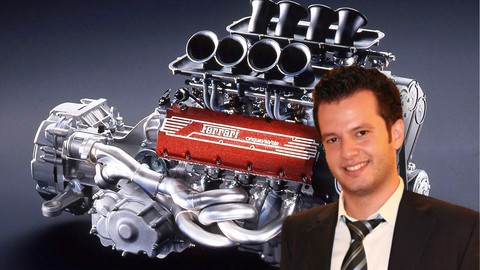
Fundamentals of Internal Combustion Engines
Engine Performance, Power, Torque, Efficiency, Compression Ratio, Otto, Diesel, Dual, Miller cycles and more
What you’ll learn
-
Understand How a Car Engine Work: Four-Stroke and Two-Stroke Engines
-
Recognize Engine Geometry and Related Terminology: Piston, TDC, BDC, Bore, Stroke, Connecting Rod, Crankshaft Arm, Crank Angle, Intake and Exhaust Valves
-
Identify and Calculate Important Engine Performance Parameters: Power, Torque, Efficiency, Mean Effective Pressure, Volumetric Efficiency, Specific Fuel Consumption
-
Perform Engine Kinematics Calculations such as the instantaneous Piston Speed
-
Evaluate the performance of heat engine cycles for which the working fluid remains a gas throughout the entire cycle
-
Develop simplifying assumptions applicable to engines
-
Solve problems based on the Otto, Diesel, Dual and Miller cycles
-
Analyze Cycles based on important parameters: Efficiency vs compression ratio, imep vs compression ratio and engine load and more
-
Compare Otto, Diesel and Miller cycles at various operating conditions
-
Learn how to draw P-V and T-S diagrams for each cycle
-
Perform a complete analysis for an Ideal Four Stroke Engine Cycle
-
Model the Intake and Exhaust Strokes and Evaluate the effect of residual fraction on cycle efficiency
Requirements
-
A Strong Background in Engineering Thermodynamics is Required.
-
Knowing How to Use Microsoft Excel is Also Required.
Who this course is for:
- Engineering students interested to learn about engines






